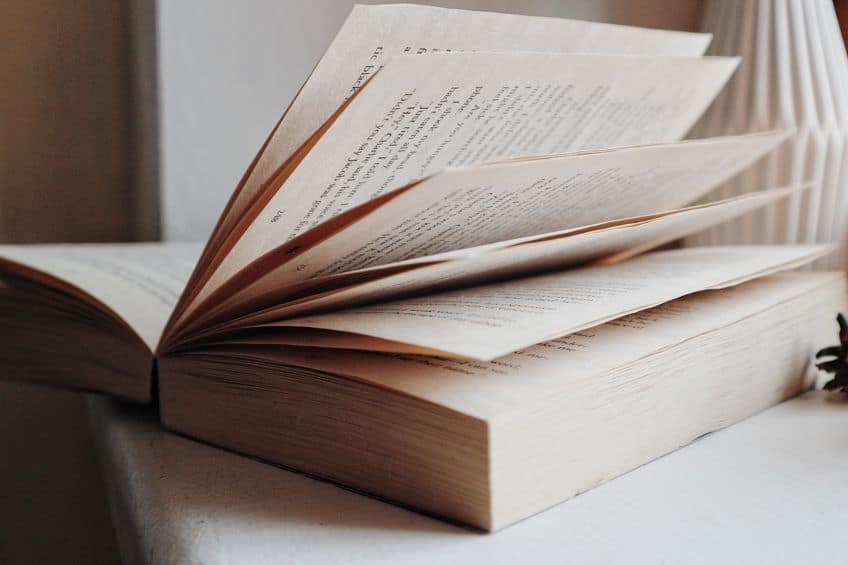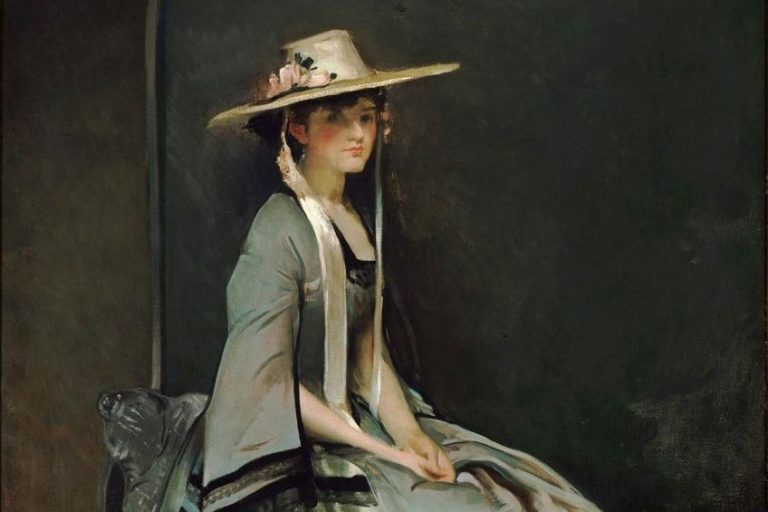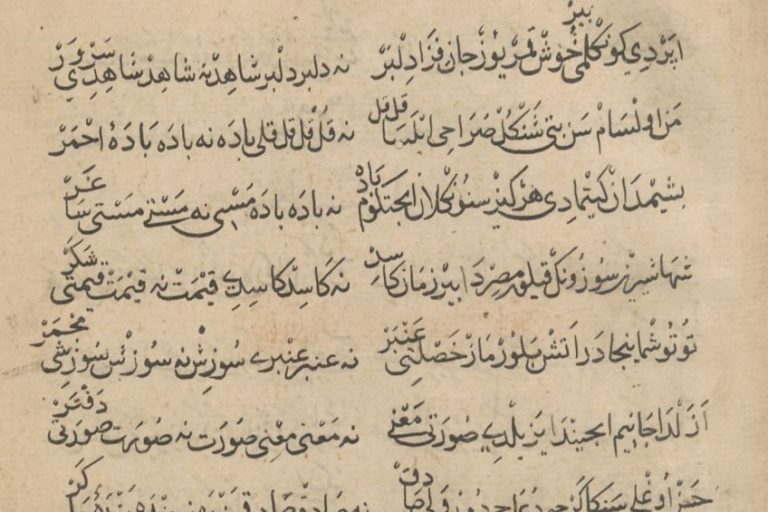How to Write a Pantoum Poem – An Easy Guide for Beginner Poets
Isn’t it fun to learn about all sorts of varied types of poetry in the world? There are just so many out there that it can be hard to keep track of them all, but this article will focus on just one of those types: the pantoum poem. If this type of poetry is one that you want to learn about, and especially if you want to learn how to write a pantoum poem on your own, then this article should be of assistance. We will explore the history of this form, the pantoum structure, the characteristics of this style of poetry, and a number of pantoum examples. This should be beneficial to those who want to learn how to write a pantoum poem. If you want to learn, keep reading!
How to Write a Pantoum Poem
The pantoum poem is a rather interesting one because it is not a variety of poetry that is oriented around something like, for instance, a rhyme scheme. Instead, it is geared around a specific arrangement of repeated sections. This means that each of the repeated lines of this poem is meant to have some kind of renewed meaning. This also means that the pantoum is similar to other repetition-based poems like the villanelle. However, we will only truly understand this form if we put some care and attention into explaining it. But for those who may not want to read it all, let’s check out a summary of the topic. For those who are still interested thereafter, you can keep reading and learn a lot more about how to write a pantoum poem.

A Summary of Pantoum Poetry
The pantoum poem is one of many poems oriented around repetition of some kind, but this repetition is highly formulated. So, to understand it, you should probably read more than a simple summary of the article in question. However, if you want a quick examination of pantoum poetry, then this summary is for you:
- The pantoum is a type of repetition poem. The basic idea is that the second and fourth lines of each of the stanzas must be repeated in the subsequent stanza. However, they must now be located in the first- and third-line positions. This can be repeated as many times the poet wishes. However, the final stanza makes use of those first and third lines from the first stanza, but the order is reversed. This ensures that the poem ends with the same line that it started with in the first place.
- The pantoum’s repeated lines should change in meaning. The pantoum poem is oriented around the idea of the different lines of the poem being repeated in different places. However, when a line is repeated, it should not simply be because it is repeated. Instead, the meaning of that particular line in that particular spot in the poem should change the meaning associated with that line. This also means that the non-repeated lines are of immense importance.
- The pantoum does not necessitate a specific meter or rhyme. While a pantoum poem certainly can make use of a metrical structure or a rhyme scheme, this is not a necessity for it to be termed an instance of pantoum poetry. The form is oriented around its use of repetition rather than any other structural elements. This also means that the form can be quite versatile as different writers will approach the creation of a pantoum poem in very different ways from others.
This very brief overview of the kind of information you may wish to have if you want to learn how to write a pantoum poem is only the beginning of things. While this summary may be somewhat beneficial, it is generally best to read more widely to understand the kinds of poetic forms that you wish to experiment with.
If this is a form that you want to try out, then you should probably keep reading.
The History of Pantoum Poetry
The pantoum poem is a traditional Malaysian poetic form that has been around since the 16th century. It formed part of the traditional literature of the culture and had features that explicitly tied into the very nature of the Malay language. The traditional form of this poetry was also a little different, such as making use of particular syllable counts and an ABAB rhyme scheme. These poems were also often used to express certain ideas about everyday Malay life.

This changed when the pantoum structure made its way into European spaces. French and Anglo-American writers came into contact with this poetic form in the 19th century, and they started adapting it to their own languages. This is the more internationally known version of the pantoum poem that is known to this day, and the one that will be of primary focus throughout this article. This poetic form has continued to be popular into the present day, and many poets still make use of it. There were even instances of this form being used by classic writers, such as Charles Baudelaire and Victor Hugo. The initial roots of the pantoum structure have, for European writers, fallen away and been replaced with a specific type of poetic structure that is focused on repetition.
The Pantoum Structure
When it comes to the pantoum, the main thing that needs to be taken into account is that it is a poem structure that makes strong use of repetition. The basic idea is that two lines in each stanza are repeated in the next stanza, and this is repeated until the final stanza where, traditionally, lines from the first stanza are repeated to cap things off once and for all.
The structure is as follows. Each stanza has four lines and is therefore a quatrain, and the second and fourth lines of each of those stanzas are the repeated versions. These lines are repeated in the next stanza. However, they are used as the first and third lines. Then that stanza’s second and fourth lines are repeated in the next stanza and so on. This structure can be theoretically infinite in length.
The final stanza is the only part of the pantoum structure that is different from the rest.
It, as part of the repetitive structure, has two lines that are from the previous stanza. However, the other two lines are actually the first and third lines from the very first stanza repeated in reverse order. This means that the final line of the poem, as well as the very first line, are the same line.
It can be rather difficult to visualize this through words alone, and so if you are trying to learn how to write a pantoum poem, you should copy and paste a pantoum example into a document and use different colors to highlight the lines so that you can see how they repeat. This can show you, far more visually, how the repetition works.
The Characteristics of Pantoum Poetry
We have already noted the way in which the pantoum poem is structured, and this structure forms the basis of the kinds of characteristics that are evident within pantoum examples. The repetition of the pantoum structure means that those repeated lines are heavily reinforced as they are repeated over and over again. This means that a poem that uses this structure can use those repeated lines to focus on some particular thematic element.
The use of repetition in a particular order allows for the pantoum structure to be highly circular. This means that we can return to certain ideas, especially seeing as they are repeated in the final stanza of the poem. This circular structure is a phenomenal way to continuously return to some specific idea within the poem.

Furthermore, the repetition of exact lines means that those lines, seeing as they are placed within different contexts, force the meaning of those same lines to change. The exact same words and expressions can mean different things based on where they are positioned in a poem and which lines and thoughts are placed between them.
Lastly, the heavy use of repetition of exact lines adds a certain musicality to the proceedings. The repeated use of lines is like a refrain or a chorus, and it can aid in the presentation of rhythm within the poem. When reading out the same lines in a new order, we can place our emphasis in different ways even though the words themselves have, strictly speaking, remained the same.
How to Write Your Own Pantoum Poem
Throughout this article, and in the next section, we have tried to examine various ways in which you could learn how to write a pantoum poem, but the only real way to do so is to actually practice it yourself. You need to do it. No one else will do this in your place. So, just like with all types of poems, you need to have some kind of an idea in mind before you jump into the writing of your pantoum poem.
The selection of lines is of paramount importance because those lines will be repeated in different sections throughout the poem.
There is a particular pattern that needs to be followed, which has already been explained, and while variation can occur within pantoum poems, the traditional version of this type of poem entails the different lines having different meanings based on how they have been repeated and which new lines now lie around them. This is something to remember when you decide to write your own pantoum poem. So, keep to the correct pattern and follow it as it has been laid out, and try to select your vocabulary very carefully so that the different lines have different meanings even though they are the exact same lines. And, lastly, revise your work to ensure that it is in as perfect a state as it can be possible to be in.
Some Pantoum Examples
If you want to learn about a specific type of poem, especially one that can be so rigid, like the pantoum structure, then the best way to understand and truly appreciate it as a form of poetry is to have a look at a number of actual instances of it. That is why we will have a look at a number of pantoum examples below. These few instances of the pantoum structure should give a good overview and, seeing as we can often learn by consuming the work of others, we might even be able to learn more about how to write a pantoum poem by having a look at these examples. So, if that’s what you want to do, dig in!

Pantoum (1956) by John Ashbery
| Date Published | 1956 |
| Type of Poem | Pantoum |
| Rhyme Scheme | None |
| Meter | Variable |
| Topic | Images |
Pantoum is a poem that presents us with an array of images that stretch out before us. This is a great way to make use of the pantoum structure. The inherent repetition that can be found in a pantoum poem means that it is the kind of poetry that can benefit from a more disjointed presentation in which emotional thoughts can be presented to the reader. This is a good thing to keep in mind for those who may wish to learn how to write a pantoum poem.
A poem of this nature, or any nature, does not necessarily need to have a definitive narrative that can be easily followed and can instead be a means of expressing feelings alone.
Parent’s Pantoum (1996) by Carolyn Kizer
| Date Published | 1996 |
| Type of Poem | Pantoum |
| Rhyme Scheme | None |
| Meter | Iambic pentameter |
| Topic | Aging and parenting |
Parent’s Pantoum is a phenomenal example of the pantoum structure. It is concerned with the experience of parents who watch their children age with time. It also serves as a means of reflection on the nature of parenthood itself and the ways in which generational differences can affect both the child and the parent. This topic is perfect for the kind of repetition found inside a pantoum poem, and when learning how to write a pantoum poem, this is the sort of message that one can learn to convey.
A poem with ideas that need to be constantly repeated and reinforced is exactly the kind of poem that can benefit from the pantoum structure.
juggler, magician, fool (2009) by Peter Schaeffer
| Date Published | 2009 |
| Type of Poem | Irregular pantoum |
| Rhyme Scheme | None |
| Meter | Variable |
| Topic | Performance |
juggler, magician, fool is a far more jovial poem than the others that have thus far been explored. In addition, it is also a very different kind of poem from those that have been discussed thus far. The reason for this is because it incorporates pantoum elements but is not a pure expression of this form of poetry. This can be seen in the way that the repetition is not perfect, but instead repeats parts of lines or even just ideas from lines. If you want to learn to write any kind of poetry, and not just pantoums, this is a good lesson to keep in mind. The poem demonstrates performance and jovial antics, but it breaks the pantoum structure to do this.
The destruction of an established structure can be used to powerful effect when producing any kind of poetry, and it is something that you should keep in mind.
The Cashpoint (2021) by Oliver Tearle
| Date Published | 2021 |
| Type of Poem | Pantoum |
| Rhyme Scheme | ABAB |
| Meter | Iambic tetrameter |
| Topic | Payments |
The Cashpoint is a poem that presents us with a very realistic image of cashpoint systems. The sounds of the tills, the transactional nature of things, and the appearance of numbers. Each of these elements comes together to produce a very interesting means of using the pantoum structure. For those learning how to write a pantoum poem, this particular pantoum has a lesson in mind, and that lesson is that this structure can be used for things that are highly repetitive in the real world. Stand near some tills in a shop and you will hear the endless noise of transactions as one after another sale is made.
It is highly repetitive, and this poem fully exposes that repetitive nature.
Another Lullaby for Insomniacs (2022) by A.E. Stallings
| Date Published | 2022 |
| Type of Poem | Pantoum |
| Rhyme Scheme | ABAB |
| Meter | Heptasyllabic |
| Topic | Insomnia |
Another Lullaby for Insomniacs is a great poem for anyone interested in learning how to write a pantoum poem. That is because it is concerned with insomnia. This affliction is something that, like a pantoum example, is highly repetitive. Every night, you try to sleep, and the same thing happens to you repeatedly. This poem reinforces that idea. The structure of the pantoum itself contributes to the meaning that the poem is expressing to us. Anything in our world that can be seen along such repetitive lines is exactly the kind of thing that would serve as a perfect piece of subject matter for a pantoum poem.
It can often feel like there are far too many varieties of poetry out there, but whenever you start to feel overwhelmed by how much is out there, try to remind yourself that the more there is, the more you can learn. If you read this article because you wanted some assistance with how to write a pantoum poem, hopefully, you have gotten at least some of what you wanted. This article has been an overview of the definition of the pantoum poem, the way in which the pantoum structure is presented, the characteristics of the form, the history of the pantoum, and a few pantoum examples. So, this should have been a relatively detailed overview for those with an interest in pantoum poetry in general. However, remember that the only way to really and truly discover how to write a pantoum poem is to get to writing one! And then another. And another… and so on… and so forth…
Frequently Asked Questions
What Is a Pantoum Poem?
A pantoum poem is a type of poetic structure that involves the repetition of specific lines within the poem. Each stanza contains lines that are repeated in the next stanza, and this can be maintained for many stanzas. There is no true limit to how many stanzas can be found in a pantoum. The focus on line repetition also means that the pantoum is not a poetic structure that generally necessitates the use of rhyme or specific meter.
Where Did the Pantoum Originate?
The pantoum poem originated in Malaysia. It has origins that go back as far as the 15th century. This form was a traditional type of Malay poetry but was then adopted by French and Anglo-American poets of the 19th century. Some of the more traditional aspects of the pantoum structure changed or fell away when they started to be written by European poets who did not have the same cultural upbringing as the traditional Malay poets.
What Is the Pantoum Structure?
The pantoum has a very specific structure. The second and fourth lines of one stanza are repeated throughout the poem. They are repeated in each subsequent stanza, but as the first and third lines. This pattern can then be maintained as long as desired. However, the very last stanza of the poem uses those same first and third lines from the first stanza, but instead uses them as the second and fourth lines. This ensures that the first line and the last line are one and the same.
What Are the Characteristics of a Pantoum Poem?
The use of repetition is, by far, the most notable aspect of the pantoum poem. However, this repetition leads to a circular structure in which lines are recycled with new ideas. This shifts the meaning while also creating a kind of musical rhythm to the poem as a whole. These elements together ensure that the pantoum poem can be a tricky but rewarding style of poetry to write.
What Are Some Pantoum Examples?
There have been many pantoum examples over the years, but some of the more recent of them include Pantoum (1956) by John Ashbery, Parent’s Pantoum (1996) by Carolyn Kizer, and juggler, magician, fool (2009) by Peter Schaeffer. This poetic variety has been around for centuries though, and so there are doubtlessly an innumerable number of these poems that can be found in the world.
Justin van Huyssteen is a freelance writer, novelist, and academic originally from Cape Town, South Africa. At present, he has a bachelor’s degree in English and literary theory and an honor’s degree in literary theory. He is currently working towards his master’s degree in literary theory with a focus on animal studies, critical theory, and semiotics within literature. As a novelist and freelancer, he often writes under the pen name L.C. Lupus.
Justin’s preferred literary movements include modern and postmodern literature with literary fiction and genre fiction like sci-fi, post-apocalyptic, and horror being of particular interest. His academia extends to his interest in prose and narratology. He enjoys analyzing a variety of mediums through a literary lens, such as graphic novels, film, and video games.
Justin is working for artincontext.org as an author and content writer since 2022. He is responsible for all blog posts about architecture, literature and poetry.
Learn more about Justin van Huyssteen and the Art in Context Team.
Cite this Article
Justin, van Huyssteen, “How to Write a Pantoum Poem – An Easy Guide for Beginner Poets.” Art in Context. January 9, 2024. URL: https://artincontext.org/how-to-write-a-pantoum-poem/
van Huyssteen, J. (2024, 9 January). How to Write a Pantoum Poem – An Easy Guide for Beginner Poets. Art in Context. https://artincontext.org/how-to-write-a-pantoum-poem/
van Huyssteen, Justin. “How to Write a Pantoum Poem – An Easy Guide for Beginner Poets.” Art in Context, January 9, 2024. https://artincontext.org/how-to-write-a-pantoum-poem/.









